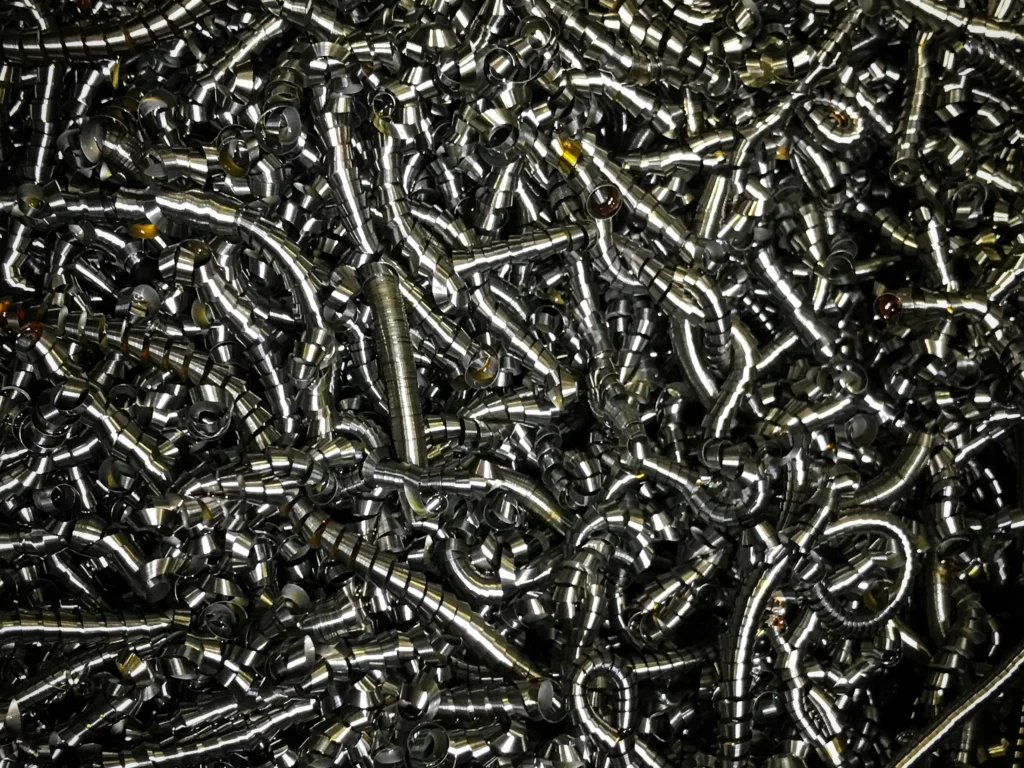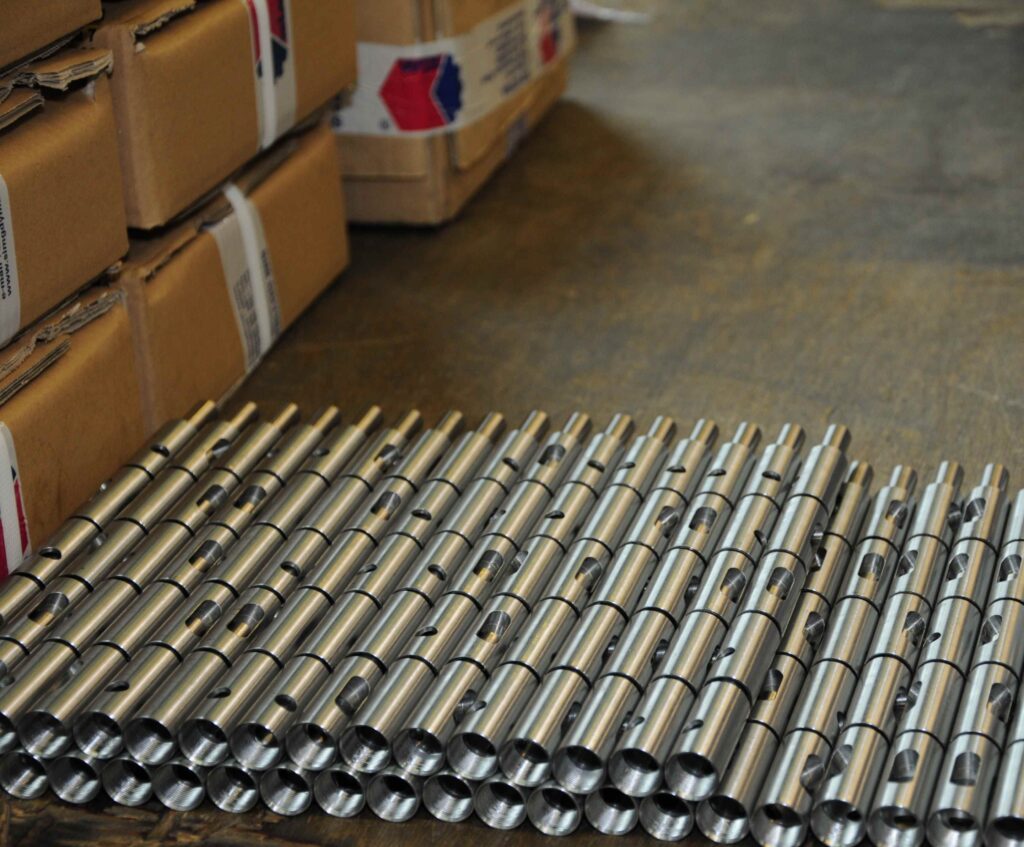In the manufacturing industry, steel is one of the most important structural materials. Its popularity stems from its wide availability, a broad range of mechanical properties, and the possibility of modifying its structure through alloying and heat treatment.
In practice, this means that two seemingly similar grades of steel can react completely differently to cutting and turning.
In this article, we look at the properties of steel that determine its behavior in CNC metalworking. We show why knowledge of the material grade is not a formality, but the foundation of a well-planned technological process.
Characteristics of steel and its applications in modern CNC machining
Steel is an alloy of iron and carbon. It may contain alloying additives such as chromium, nickel, molybdenum, or manganese. These components allow for different physical and chemical properties of the material.
The most commonly used alloying additives for steel are:
- Chromium (Cr) – added in amounts ranging from 10.5% to 30%. It is responsible for corrosion and oxidation resistance. It is essential for stainless steels.
- Nickel (Ni) – found in amounts ranging from 5% to 20%. It increases impact strength (resistance to cracking under dynamic loads) and ductility.
- Molybdenum (Mo) – in the range of 0.2% to 5%. Increases corrosion resistance in acidic environments and improves properties at high temperatures.
- Manganese (Mn) – from 0.3% to 2%. Improves hardenability, increases strength and abrasion resistance, and facilitates the removal of sulfur and oxygen during smelting.
The most common types of steel:
- Structural steels – characterized by high strength and good weldability.
- Stainless steels – corrosion resistant thanks to their chromium content.
- Tool steels – very hard, wear-resistant,
Knowledge of the properties of a given steel grade is crucial when planning CNC machining. It determines which tools, parameters, and coolant should be used.

Steel grades and CNC machining – how do they affect the selection of technological parameters?
The properties of the material determine how it will behave in contact with the tool and what technological conditions should be adopted to achieve a stable, repeatable process.
Low-carbon steels
They are characterized by good plasticity and ease of machining, but lower strength. They can be machined at higher feed rates with less risk of tool damage.
High-carbon steels
Significantly harder and more resistant to abrasion, but more difficult to machine. They require sharp tool geometry and reduced cutting speeds to avoid overheating and vibration.
Alloy steels (e.g. with added chromium, nickel, molybdenum)
They are characterized by increased strength, corrosion or wear resistance. They require an individual technological approach – both in the selection of coolant and cutting strategy.
Stainless steels
Difficult to machine due to their tendency to form build-up on the cutting edge. High chromium and nickel content increases corrosion resistance but also impairs machinability. Very sharp tools and intensive cooling are required.
Tool steels
Heat-treated to achieve high hardness. They require tools with high wear resistance. The presence of molybdenum and vanadium improves resistance to overheating and abrasion during intensive cutting.
Tools and machines for CNC machining of steel
In modern CNC machining of steel, a wide range of specialized tools and machines are used, adapted to the type of material being machined and the machining method:
- Carbide end mills – most commonly used for structural and alloy steels. TiAlN or AlCrN coatings increase resistance to abrasion and high temperatures, which is particularly useful for long milling cycles.
- PVD-coated cutters – used for machining stainless steels. Thanks to their low coefficient of friction and high hardness, they enable effective cutting of difficult-to-cut materials.
- Turning inserts – available in versions optimized for specific steel grades: stainless steel (designation M), structural steel (P) and hardened steel (H). Versions for stainless steel have sharp edges and special chip breakers.
- Drill bits with internal cooling – essential for drilling stainless and hardened steels, where effective cooling and chip removal directly affect the quality of the hole and the tool’s service life.
- Turning tools with positive geometry – used in CNC lathes, especially when machining stainless steel. They ensure smooth cutting and minimize the risk of material build-up.
It is important to select the right machining parameters, such as cutting speed, feed rate, and cutting depth, for the properties of the material.

Typical errors during CNC machining of steel and how to eliminate them
Steel in a machining environment requires constant monitoring of parameters and adaptation of tools to the type of material. The most common problems include:
- Excessively aggressive cutting parameters – result in rapid tool wear and deterioration of surface quality.
- Insufficient cooling – leads to blade overheating and thermal deformation. The solution is to use a drill with internal cooling and a high-performance coolant.
- Incorrect workpiece clamping – can cause vibrations and shifts, which reduce dimensional accuracy. It is advisable to use hydraulic vices or special holders with stress compensation and to verify the setting of the reference points (starting points for machining) on the milling machine.
To minimize the risk of errors, it is worth implementing test runs, using cooling adapted to the steel grade, and monitoring the process with vibration and temperature sensors.
Summary – what to remember about CNC machining of steel
CNC machining of steel is a complex but fundamental process in modern industrial production. In order to achieve high quality and repeatability of parts, it is necessary to understand the properties of a particular steel grade and to adapt the appropriate tools, cutting strategies, and machine tool operating parameters to them.
The precise selection of tools (cutters, inserts, drills), effective cooling, and the rigidity of CNC machines are of key importance here. Avoiding common mistakes such as overheating tools, poor clamping, or overly aggressive cutting translates into longer tool life and optimization of the entire process.
The right approach to steel machining is not only a matter of technique, but also of efficiency, quality, and reliability.
